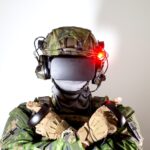Introduction
Imagine a world where computers can see, interpret, and understand visual data as humans do. It might sound like a concept from a science fiction novel, but it’s a reality today, thanks to the advancement in artificial intelligence (AI) known as computer vision. Computer vision is an AI technology that enables computers to interpret and understand the visual world. By digitally analyzing images and videos, computer vision can identify objects, classify them, and even track their movements. According to Markets and Markets, the computer vision market is expected to reach $25.32 billion by 2023, demonstrating the immense potential of this technology. But how can small businesses leverage this cutting-edge technology? Here are some practical applications of computer vision that could revolutionize your business operations.
Product Quality Control
Quality control is a crucial aspect of manufacturing businesses. With computer vision, businesses can automate the quality control process, reducing manual errors. Computer vision systems can analyze products in real-time, detecting defects and irregularities faster and more accurately than human inspectors. A good example of computer vision in quality control is the use of AI-powered cameras in car manufacturing. These cameras can detect minute defects in car parts which might be missed by a human eye, ensuring that only high-quality parts are used in the production line.
Similarly, food and beverage companies can use computer vision to maintain the consistency and quality of their products. For instance, sorting fruits based on their ripeness or detecting foreign objects in food items can be easily done with computer vision, ensuring that customers always receive high-quality products.
Security and Surveillance
Computer vision can significantly enhance security systems by providing more accurate and reliable surveillance. Traditional security cameras merely record video footage, but with computer vision, security systems can analyze the footage in real time, identify suspicious activities, and even alert the concerned authorities. For example, computer vision can identify if a person is loitering around a restricted area or if a valuable item has been removed from its place. This proactive approach to security can help prevent incidents before they occur, providing a safer environment.
Computer vision is also used in facial recognition systems, a technology that has gained popularity in recent years. Businesses can use facial recognition for identity verification or access control, ensuring that only authorized individuals can access certain areas or information.
Customer Behavior Analysis
Understanding customer behavior is critical for any business. With computer vision, businesses can gain deeper insights into how customers interact with their products or services. Retail stores, for example, can use computer vision to track customers’ movements, identify which products they look at or pick up, and analyze their facial expressions to gauge their reactions. This information can be invaluable for optimizing product placement, pricing strategies, and overall customer experience.
In the online world, computer vision can help businesses understand how users interact with their websites or apps. By tracking users’ eye movements and clicks, businesses can identify which parts of their website or app are most engaging and which parts need improvement.
Future Implications and Trends
The potential of computer vision is not limited to these applications. As technology advances, we can expect to see even more innovative uses of computer vision. For instance, computer vision could play a vital role in the development of autonomous vehicles, enabling them to identify and respond to objects, signs, and other vehicles on the road.
Moreover, the integration of computer vision with other technologies like augmented reality (AR) and virtual reality (VR) opens up new possibilities. For example, AR apps that use computer vision can provide real-time information about the environment, making our interactions with the digital world more seamless and intuitive.
Conclusion
Computer vision is a powerful tool that can revolutionize various aspects of your business, from quality control and security to customer behavior analysis. By understanding and leveraging this technology, businesses can automate processes, improve accuracy, enhance security, and gain deeper insights into customer behavior. As computer vision continues to evolve, it promises to bring even more exciting possibilities for the future of business.




